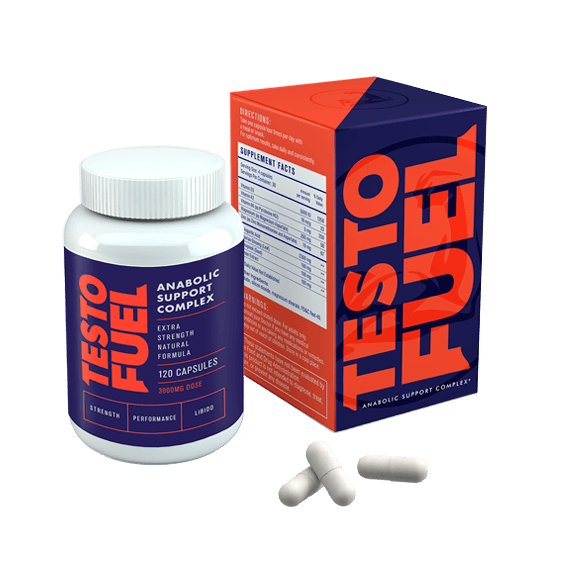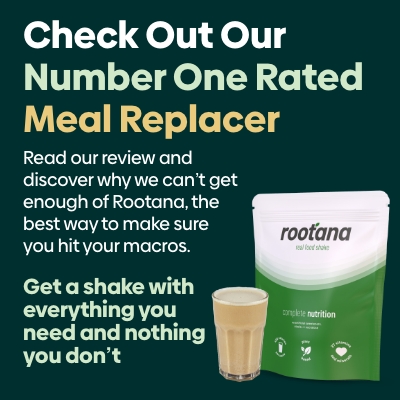The Greatest Physiques Fat Loss Diet Guide
When it comes to losing fat and ditching the excess pounds, it’s diet that plays the most important role of all. Check out this fat loss diet guide and make big changes to your physique.
The gym is a great place to build athleticism, muscle mass and fitness. It also supports your body recomposition goals by boosting calorie burning and overall conditioning,
It’s the kitchen where fat loss truly happens.
Because without a solid diet plan, fat loss is much more difficult.
In this detailed guide, we guide take you through everything you need to know about eating for fat loss – from calories and energy intake to micronutrition and sample eating plans.
It’s detailed in places but don’t let that put you off – it’s easy to read and gives you all the answers you’re looking for. For someone that takes the lean life seriously, this is everything you need condensed into one guide.
So, grab a knife and fork and let’s get cooking up some muscle mass…
Here’s what’s covered:
- The importance of calories when eating for fat loss
- Macronutrient breakdown – eating for maximal fat loss
- Sample fat-burning menu plan
The Fat Loss Eating Plan – Everything You Need to Know About Losing Fat
From bodybuilders to athletes, the pros know that a truly great physique is the product of both training and nutrition – they go hand in hand.
Without the gym, you can’t build the muscle and fitness you need to turn heads. But it doesn’t matter how strong you are if you don’t eat right to support your physique.
Accessing the right foods not only powers you through each workout, but also supports growth, repair and recovery.
That’s the simple start and end of this guide – nutrition underpins everything you do.
Those with a poor approach to dieting soon crash and burn.
Ultimately, nutrition is key when it comes to fat loss.
Whether your goal is to strip down to single digit body fat or just lose a bit of belly fat, the process is the same – it all comes down to how you handle your nutrition.
All the information presented in this fat loss guide has been collected and analysed by our team of sport nutritionists, coaches and trainers.
Here, we’ll break down the science of fat loss, so you don’t need to guess.
Calories are key when it comes to fat loss
It’s calories make or break a diet.
As a measure of energy, they act within the laws of physics. We’re able to predict what happens to your body when you diet, purely based on what we know about energy.
A Calorie is simply the amount of energy it takes to warm up one gram of water by one degree Celsius. A food Calorie (referred to as a kilocalorie or kcal) is the energy it takes to heat a kilo of water by one degree Celsius.
When we talk about ‘burning’ calories we’re pretty much being literal – because when we measure how many calories are being used for energy or how much is in the foods you eat, we measured it by how much heat it generates.
Think back to high school science lessons. Do you remember this quote?
“Energy can’t be created or destroyed, only transferred from one entity to another”.
When you eat that bagel and chug that protein shake, the energy inside it transfers to your body so that it can be used to support the numerous functions of your body.
Energy balance is what drives fat loss
Whether you gain body fat or lose it can be boiled right down to one thing – the relationship between how many calories go in your body… and how many go out.
Calories and body weight work a bit like a set of weighing scales – like the ones used by Lady Justice. Only these scales aren’t so much about illustrating the balance between support and opposition, but calories in and calories out.
- On one side of the scales you have calorie input: the energy you take in from foods.
- And on the other you have calories expenditure: the energy you burn off when you move, exercise etc. and through basic functions such as regulation of temperature and organ function.
This is the important part…
Which side of the scale weighs heaviest controls what happens to body fat.
- Calories in are higher than calories burned off – Eating more than you burn off each day leads to storing the extra calories as fat.
- Calories in are lower than calories burned off – Burning off more than you eat leads to fat loss.
- Your calories going equals calories out – Giving your body just enough energy it needs means you’ll maintain fat mass – neither losing or gaining.
Here’s a calculator for you to look at how many calories you should be eating each day based on your age, weight, gender and activity levels. It’s a scientifically accurate formula too, so you can be confident that the numbers are reliable…
Fat loss is controlled by your calorie deficit
In our bodybuilding diet: guide to building muscle, we talked you through everything you need to know to build solid slabs of functionally strong muscle.
In that guide we told you that the best way to build muscle is to have some ‘loose change’ calories in your diet so your body can use the fuel to stack up some extra muscle.
Guess what?
It’s the opposite for fat loss.
The most important thing you’ll learn here today is this: you CAN’T lose fat if you’re not in a calorie deficit.
There are fat burning foods and fat burning supplements.
But they only work if your diet is controlled.
When you burn off more energy than you’re putting in your body, your cells realize this. They panic at the thought of running on low fuel and start to search for some extra energy. They find it in fat cells.
Fat stores a lot of energy – 9kcal per gram. When energy going into your body is in shortage, your fat cells open up, releasing that fatty goodness so that it can be broken down and used.
That’s why a calorie deficit is key – because without it, your fat cells just can’t release energy.
So how much of a calorie deficit do you need?
To calculate your optimal calorie intake for fat loss you should shoot for a 10-40% deficit below maintenance level. That’s somewhere (dependent on body weight) between 300-1,000 kcal below what your body needs to maintain its current state.
At 10-20%, the rate of fat loss might not be as fast. You’ll lose a pound or two per week. But it’s comfortable – you probably won’t notice much hunger or loss of day-to-day energy.
A more aggressive drop in calories will result in much faster fat loss – perfect if you have an important date you want to look your best for. But with such a slash in energy intake you’ll constantly feel hungry.
It’s really all down to what suits you and your own goals.
Key Point: Calories are the very first thing you should get in check when starting a fat loss diet. Without a calorie deficit you just won’t lose fat.
Fat loss diet plan – Macronutrients and Optimal Eating
Once your calories are calculated and you’re ready to get going, the next part of the plan is to start looking at actual foods.
Macronutrients refer to carbs, protein and fats – the food sources that provide energy (note: alcohol provides 7 kcal per gram but has no nutrient value). They are needed in large amounts by the body to maintain survival and function – that’s why they’re referred to as ‘macro’ nutrients.
There are 3 macronutrients:
- Protein- for every gram of protein you eat, you get 4 kcal
- Fats – you get 9 kcal for a gram
- Carbohydrate – 4 kcal per gram
The importance of these nutrient groups doesn’t just end with energy either. As well as providing calories, each ‘macro’ provides you with its own set of additional nutrients – vitamins and minerals for etc. These are food specific too – for example, a potato and rice are both carb sources, but offer a different profile of more ‘micro’ nutrition.
In this next section we tell you more bout each macronutrient. We’ve laid it out in order of importance – protein for example should be a priority when planning a fat loss diet. And then fats etc.
#1. Protein – Helps you maintain metabolism and muscle mass during a diet
The most important nutrient on your fat loss diet list is protein. It’s your number one weapon.
Protein is a multi-functional nutrient meaning it supports your body in several ways.
- Growth, repair and maintenance of lean tissue
- Synthesizes some enzymes and hormones
- Promotes white cell production too
When calories are low, you need to do everything you can to preserve muscle. Simply because the more muscle you have, the higher your metabolic rate is. When dieting, your body can turn to muscle for energy by breaking it down instead of fat. You really don’t want this to happen.
Protein is like armour for muscle cells. It protects them from invading signals from hormones that want to tap away at them for energy.
Muscle tissue is a bit like a tank full of water with a running tap and a plug hole. When you eat protein-rich foods you turn the tap on and ‘fill’ the muscle up with the fuel it needs for repair and growth.
Foods providing a high amount of protein include:
- Meat and seafood
- Eggs
- Whey and milk
- Cottage cheese
- Soy
Protein Recommendation: In order to maximize muscle retention during a fat loss diet you should aim for a protein intake of around 0.7-1 g per lb of body weight.
#2. Fats – Help you maintain hormonal health
Fats have been called the bad guy since the 1980’s.
But they’re essential for good health. They provide nutrition you just can’t get elsewhere – and support everything from heart health and brain function to athletic performance.
Even though fats provide the highest calorie count per gram (9 kcal) they can still support fat loss.
Fat provides the building blocks for a number of hormones – the most important being steroid hormones such as testosterone and estrogen.
- Testosterone is an ‘anabolic’ hormone that helps you maintain a healthy body composition
- Estrogen supports heart health and bone strength – even in men.
In both men and women, low testosterone is highly associated with being overweight. It also has a negative impact on mood, health, sex drive and muscle mass. Testosterone isn’t famous for it’s fat burning capabilities – but it works tirelessly in the background to keep you lean and strong.
You don’t need a huge amount of fat in your diet, but you do need enough to maintain steroid hormone production.
Foods providing a high amount of fat include:
- Oily fish
- Vitamin D3 supplements
- Butter
- Avocado
- Nuts
- Oils (olive, coconut, avocado etc.)
Fat Recommendation: You don’t need a great deal of fat in your diet to reap the rewards. Around 0.4 g per lb of body weight will do the trick.
#3. Carbohydrates – Gives you the energy you need to smash the gym
When you eat a food that’s rich in carbs, your body breaks it down into glucose for energy and stores as much as it can in your muscles and liver in the form of glycogen.
Carbs aren’t actually an ‘essential’ nutrient.
When intake of carbs is low, your body makes it own by breaking down muscle tissue and converting it to glycogen. This is done by a process celled gluconeogenesis.
That’s a bad thing of course, because you know now that muscle loss leads to a decline in metabolic rate, making fat loss tougher.
Carbs provide your body with the energy it needs to exercise at higher intensities during tough workouts. It’s your first energy source during hard exercise.
Carbs can be split into 2 main categories:
- Complex carbs
- Simple carbs
Complex carbs are those that take longer for your body to break down. Simply because they have long chains of monosaccharide molecules that your gut must hack away at before it can get the glucose it needs. These foods help you feel full for long periods of time, and contain higher amounts of fiber, vitamins and minerals to optimize health.
Examples include:
- Wholewheat bread and pasta
- Brown rice
- Root vegetables
- Peas and beans
Simple carbs are made up of shorter chains. Once in your stomach, they break down fast, providing instant energy and a larger spike in blood sugar. They are low in nutrients and easy to over-consume, so it’s important not to overeat them as you can easily destroy your calorie deficit if you aren’t careful.
But as a pre workout ‘pick-me-up’, simple carbs provide the boost you need for a good workout without having to run around with a belly full of wholemeal pasta or rice.
Examples include:
- Sugar, cakes, cookies, donuts
- Syrup, fruit juice and candy
- Sports drinks
Carbohydrate Recommendation: You can fill up the remainder of your daily calories with carbs – it should work out around 1.5 g per lb of body weight.
Fat loss diet menu plan
So far in this guide we’ve looked at calories, macronutrients and recommendations. All that’s left to do now is put it all together into an actual example diet menu plan.
Every single person reading this menu will have different needs. Your gender, weight, height, likes and dislikes, allergies and activity levels mean your diet plan has to be individual.
This is just a sample plan to show you how a fat loss diet might look in real time.
Your calorie intake is individual to you. So is your macro breakdown. Maybe you’re vegan or have food intolerances that affect what choice of foods go into your diet.
Here’s an example fat loss diet plan. Use it as a frame of reference to help get you started…
Meal 1
- 2 scrambled eggs cooked in butter
- 1 slice of wholemeal toast
Snack
- 1 cup mixed berries and 100 g Greek yogurt
Meal 2
- Medium baked potato
- 1 tin tuna in brine
- 1 cup of mixed root vegetables (broccoli, carrots)
Snack
- Turkey roll with lettuce and wholemeal wrap
Meal 3
- 1 Grilled chicken breast cooked in garlic
- 1/2 cup brown rice
- Garden salad
Total calories: 1,412, Carbs: 155 g, Fat: 34 g, Protein: 128 g
The bottom line
Now you’ve got the building blocks for a fat loss diet, all that’s left to do is apply it. This is a great opportunity to start shredding fat while staying super lean and athletic.
Keep us posted how you get on with it and good luck.




View Comments
This is very helpful! I am very intrigued to apply and start working on my fat loss and muscle gain.